Leslie Glass's Blog, page 249
August 14, 2019
Taraji P. Henson Launches Black Mental Health Foundation
Taraji P. Henson is proving that not only is the year to be booked and busy with new movie roles, but she is also putting in work within her community. Yesterday (Aug. 13) the actress and philanthropist revealed that she has launched a new foundation specifically geared to the minds of the black community.
The Boris Lawrence Henson Foundation, named after her late father, will specifically fight to change the stigma of mental health within the black community. Her foundation—her best friend Tracie Jenkins will serve as the Executive Director—will offer scholarships to black students majoring in mental health, as well as provide mental health services for youth in urban schools.
Her father was the inspiration for this undertaking. According to People, her father, a former veteran battling mental health issues, fought liver cancer up until his passing in 2006 at the age of 58. “I named the organization after my father because of his complete and unconditional love for me; his unabashed, unashamed ability to tell the truth, even if it hurt; and his strength to push through his own battles with mental health issues,” she said. “My dad fought in the Vietnam War for our country, returned broken, and received little to no physical and emotional support. I stand now in his absence, committed to offering support to African Americans who face trauma daily, simply because they are black.”
The Boris Lawrence Henson Foundation officially launches on Sept. 22 in Los Angeles at her event, Taraji’s Boutique of Hope. Continue doing the work, Ms. Henson.
Johann Hari: Everything You Think You Know About Addiction Is Wrong
What really causes addiction — to everything from cocaine to smart-phones? And how can we overcome it? Johann Hari has seen our current methods fail firsthand, as he has watched loved ones struggle to manage their addictions. He started to wonder why we treat addicts the way we do — and if there might be a better way. As he shares in this deeply personal talk, his questions took him around the world, and unearthed some surprising and hopeful ways of thinking about an age-old problem.
This content was originally published here.
The post Johann Hari: Everything You Think You Know About Addiction Is Wrong appeared first on Reach Out Recovery.
August 12, 2019
OxyContin maker gets patent for drug to treat opioid addiction
Purdue Pharma, the maker of OxyContin, has received a patent designed to treat opioid addiction.
The patent, first reported by The Financial Times, is for a new and faster-acting form of buprenorphine. Buprenorphine controls drug cravings and is often given as a substitute to people hooked on heroin or opioid painkillers such as OxyContin.
Buprenorphine is currently prescribed in tablets or fast-dissolving strips. The patent is for a “wafer” of buprenorphine that would dissolve in just a few seconds.
“While opioids have always been known to be useful in pain treatment, they also display an addictive potential,” the patent states. “Thus, if opioids are taken by healthy human subjects with a drug-seeking behaviour they may lead to psychological as well as physical dependence.”
Purdue Pharma is the subject of many lawsuits for allegedly fueling the opioid epidemic. The Sackler family, which controls Purdue, was personally named in a lawsuit in June in which the Massachusetts attorney general accused them of a “deadly, deceptive scheme to sell opioids.” The company, and the Sackler family, deny those allegations.
Richard Sackler, who sits on the company’s board, is listed as one of the inventors on the patent.
Use of OxyContin, invented in 1995, was fueled by an aggressive marketing campaign that led to it becoming the most widely prescribed opioid. Though prescriptions for the drug started to decline in 2010, it still garnered more than $2 billion in sales in 2015, according to the Los Angeles Times.
Purdue pleaded guilty in 2007 to a felony charge of misleading regulators about OxyContin’s potential for abuse and paid a fine of $600 million, although a whistleblower says the company continued its deceptive sales tactics after that date. In June of this year, the company laid off its entire sales team.
Earlier this week, the company donated $3.4 million to a nonprofit drug developer working on an over-the-counter version of naloxone, a nasal spray used to treat opioid overdoses that retails for about $140 per dose.
Purdue will not receive royalties from sales of the naloxone treatment, which is being developed by Harm Reduction Therapeuticals, the company said.
About 48,000 people died from opioid overdoses last year, according to the CDC. Since 2013, a total of more than 170,000 people have died from overdosing on opioids, including heroin.
A Purdue spokesman declined to answer questions about the patent, calling the FT report “a story built on speculation.”
This content was originally published here.
The post OxyContin maker gets patent for drug to treat opioid addiction appeared first on Reach Out Recovery.
Moby Has Just Released Four Hours Worth Of Free Music Designed For Yoga And Meditation
Moby (Richard Melville Hall), is an American DJ, singer, songwriter, musician, photographer and animal rights activist. He is well known for his electronic music, veganism, and support of animal rights.
Recently on his website he released a series of ambient recording designed to help people feel a great calmness. This is what he said on his website ;
”Over the last couple of years i’ve been making really really really quiet music to listen to when i do yoga or sleep or meditate or panic. i ended up with 4 hours of music and have decided to give it away.
you can download it for free below or stream it on spotify, soundcloud, apple music, deezer, youtube & tidal.
it’s really quiet: no drums, no vocals, just very slow calm pretty chords and sounds and things for sleeping and yoga and etc. and feel free to share it or give it away or whatever, it’s not protected or anything, or at least it shouldn’t be.
If you would prefer to download the music for yourself just click on the image below and you will be taken to his website where you can stream or download.
I am a big Moby fan myself and am I hope you enjoy his epic sounds as much as I am.
LIKE OUR PAGE
Support Us
Every little bit helps fund the site & keep all thefree information on it. Thanks in advance.
This content was originally published here.
The post Moby Has Just Released Four Hours Worth Of Free Music Designed For Yoga And Meditation appeared first on Reach Out Recovery.
The ‘Gateway Drug’ Is Alcohol, Not Marijuana
Researchers at the University of Florida have found that the theory of a “gateway drug” is not associated with marijuana – results from the Guttman scale indicated that alcohol represented the gateway drug, leading to the use of tobacco, marijuana, and other illicit substances. Furthermore, students who used alcohol “exhibited a significantly greater likelihood of using both licit and illicit drugs”.
In an interview with Raw Story, co-author Adam E. Barry said that his studies were intended to correct some of the propaganda that has infected American culture since the “Reefer Madness” era.
“Some of these earlier iterations needed to be fleshed out, that’s why we wanted to study this. The latest form of the gateway theory is that it begins with [cannabis] and moves on finally to what laypeople often call ‘harder drugs’. As you can see from the findings of our study, it confirmed this gateway hypothesis, but it follows progression from licit substances, specifically alcohol, and moves on to illicit substances,” Barry said. These findings walk hand-in-hand with a 2012 study from Yale that found that alcohol and cigarettes were much more likely than marijuana to precede opiate abuse.
Researchers used a nationally representative sample of high school seniors, evaluating data collected through the University of Michigan’s Monitoring the Future survey, which tracks drug use trends among youth in the US. Barry’s study focused on data collected from 14,577 high school seniors from 120 public and private schools in the United States.
By comparing substance abuse rates between drinkers and non-drinkers, the researchers found that seniors in high school who had consumed alcohol at least once in their lives “were 13 times more likely to use cigarettes, 16 times more likely to use marijuana and other narcotics, and 13 times more likely to use cocaine”.
In the sample of students, alcohol also represented the most commonly used substance, with 72.2 percent of students reporting alcohol consumption at some point in their lifetime. Comparatively, 45 percent of students reported using tobacco, and 43.3 percent cited marijuana use.
“The findings from this investigation support that alcohol should receive primary attention in school-based substance abuse prevention programming, as the use of other substances could be impacted by delaying or preventing alcohol use. Therefore, it seems prudent for school and public health officials to focus prevention efforts, policies, and monies, on addressing adolescent alcohol use,” the study concluded.
Scientists had earlier discovered that cannabis, a therapeutic healing herb, may actually reduce brain damage caused by alcohol. A 2013 study from the University of Kentucky and the University of Maryland concluded that a chemical in marijuana called cannabidiol could be used to treat alcohol-induced neuro-degeneration.
Results of a very recent study has led to the conclusion that ‘illegal’ marijuana is far and away the safest ‘legal’ drug. Based on the findings, the researchers agreed that weed is 114 times less deadly than alcohol.
This Article (The ‘Gateway Drug’ Is Alcohol, Not Marijuana) is free and open source. You have permission to republish this article under a Creative Commons license with attribution to the author and AnonHQ.com.
Anonymous recommends: Click Here To Surf & Download Anonymously, Protect Yourself From Any Hackers Or Spy Agencies And Get Around Censorship Filters
Click here to follow us on steemit.com, the decentralized social media platform with no censorship and get paid for your posts, likes and comments!
This content was originally published here.
The post The ‘Gateway Drug’ Is Alcohol, Not Marijuana appeared first on Reach Out Recovery.
Amazing Things Happen to Your Body When You Don’t Drink Alcohol for 28 Days
Getting drunk is fun and all, but waking up achy, nauseous, and puffy with bags under your eyes is not. You don’t need to be a genius to know drinking alcohol isn’t good for you.
Sure, there might be some benefits from drinking a glass of wine here and there, but taking SHOTS SHOTS SHOTS, or chugging one beer after another, not so much.
A recent study found that the average income earner who is not addicted to alcohol consumes around 9.5 liters of alcohol every year. This figure accounts for people who drink occasionally – when out with friends, or to destress after a tough day at work.
Let’s say you are a part of that ‘average’ group – what would happen if you stopped drinking completely for 28 days?
Several volunteers decided to give up drinking alcohol for the month of January and documented changes in their health and appearance along the way.
Here’s what happened…
Increased appetite and sugar cravings
Have you ever noticed that you eat more food when you drink alcohol? Are you currently conjuring up images of those late-night burrito runs like I am?
Over time, you can expect to eat less after giving up alcohol, but at first, most people reported eating more. They also craved more sugar. That’s because without sugary drinks, you’ll experience a dip in blood sugar levels.
Week one without alcohol isn’t the greatest. Your blood sugars may drop, and you could experience headaches, especially if you’re used to drinking before going to bed at night.
Your quality of sleep may suffer in the short term. Also, if you used alcohol as a way to reduce pain, you may experience an increase in pain.
Stay strong! Keep in mind, these negative side effects go away during week two – you’ve got this.
WEEK TWO
Better sleep and overall health
By week two, things are starting to look brighter.
Most people report that their sleep improves. Plus, they notice a decrease in dark circles as well as facial swelling, which translates to a healthier and more youthful appearance.
Less expected changes include:
Your liver thanks you
Depending on how much alcohol you consumed in the past, your liver may start to recover by week three.
Better skin, fewer wrinkles
Blood circulation improves, causing more oxygen to freely flow throughout your body. As a result, skin color changes and fine lines disappear.
Better digestion
Digestion improves thanks to a decrease in gastric acid. Too much gastric acid causes the stomach to quite literally eat itself.
WEEK FOUR
Reduced risk of cardiovascular diseases
In the fourth week, the average person losses around six to eight pounds. The risk of developing cardiovascular diseases goes down with your waistline. Some people bounce back from high blood pressure and hypertension.
Your skin is lighter and clearer because the water balance in your body is restored, along with circulation.
Improved confidence and mental state
Many people reported improvements to their overall confidence at this time, as the brain begins to function more productively.
When you drink regularly, brain cells die due to lack of oxygen. When you stop drinking, the opposite takes effect.
The before and after photo below offers a perfect example of just how much your physical appearance can change after giving up alcohol for 28 days.
Week one might not be all that fun, but once you experience the results, it’s so worth it.
“A month off is the perfect way to reset your relationship with alcohol. It only takes three weeks to break a habit, so this could be your route to happier, healthier drinking long-term,” according to alchoholchange.org.
According to 2018 research by the Royal Free Hospital published in the British Medical Journal, there are a lot of benefits when you quit drinking for a month, including:
This content was originally published here.
The post Amazing Things Happen to Your Body When You Don’t Drink Alcohol for 28 Days appeared first on Reach Out Recovery.
August 11, 2019
The magical power of crystals
Image:©hifashion/Fotolia
The belief in the healing properties of crystals is ancient, but recently it has been rediscovered. Ever since ancient times, crystals have been worn as amulets. Eventually people noticed that they also influence the healing processes and the overall health of the body. Thus they began to use them as an ingredient in potions and cures. Jade, for example was known in the middle ages for its use in treating and preventing kidney problems. Jasper was useful in curing eye problems, healing wounds and stopping bleedings. Ruby was thought to enhance passion, agate – health and so on.
Crystals cannot be used as a stand-alone cure, but can sure enhance the work of medicine. For example, drinking water in which a certain gem has been staying can have a beneficial effect on certain aspects of the body’s health. If you place the crystal directly over the painful area it will alleviate the pain and help toward a speedy recovery. If you rub a wound with a specific crystal, it will heal quicker.
The practice of using precious stones for healing is known as lithotherapy. The crystal most widely used in it is the aquamarine, which treats allergies, sinus problems, trachea and problems with the hearing and teeth. It also helps a person reveal his or her artistic abilities. Amethyst reveals the creative, spiritual side of a person, too. Placed on the celiac plexus, it helps with intoxication and digestive problems. Diamond is the gem closest to the human biological level. It regulates temperature and supports only people with good intentions. Emerald brings inner peace, heals the heart and the eyes. Citrine stimulates the intellect. Garnet gives courage and will; it also helps with stomach problems and arthritis. Opal is used during meditation and crafts; it gives peaceful dreams. Quartz is universal; it has a relaxing effect on the body. When worn close to the heart it ensures the safety of children. Sapphire enhances a person’s extrasensory receptors. If it ever breaks, it must be returned to the person who gave it to you, or else you are in for a lot of trouble. Topaz strengthens friendship and stimulates the body to operate properly. Tourmaline helps with psychological illnesses and directs a person’s mind to the material plane. Turquoise removes all negative influences and shatters when its owner dies.
The effects crystals have on the body depend on the zodiac sign of the person wearing them and also the color of the gem itself.
This content was originally published here.
The post The magical power of crystals appeared first on Reach Out Recovery.
15 Shrewd Money Management Tips

DISCLOSURE:
Some of the links in this post are from our sponsors. We’re letting you know because it’s what Honest Abe would do. After all, he is on our favorite coin.
You know your finances could use some serious TLC, but you’ve been putting it off… and off… and off.
When you finally do sit down to think about it, you immediately become overwhelmed. Which goal do you attack first? You need a budget, a savings plan, a debt-repayment strategy, a better credit score, a plan for retirement and… oh, you’re running away again, aren’t you?
Calm down and come back. To tackle big goals, you have to start small.
Simple Money Management Steps to Take Today
Here are a few simple tips you can take today to get your finances under control and start working toward a healthier financial future.
1. Have a Cup of Coffee and Assess the Damage
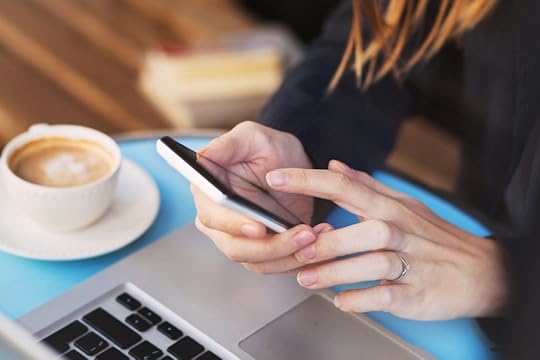 anyaberkut/Getty Images
anyaberkut/Getty ImagesDid you know that around 20% of consumers have an error on their credit report that is likely bringing down their score? And those poor scores can hinder every part of your financial wellness.
Banks and credit card companies aren’t the only ones that look at your credit score. You’ll have to authorize a credit check when you want to move into a new apartment, rent a car with a debit card or buy a new phone.
That’s why we always suggest starting with a peek at your credit score — specifically from somewhere that can let you know if there’s anything to be concerned about.
Even better if it’s free.
The credit report card from Credit Sesame does all that, and it’s free. The report lays out all your unpaid debts, any delinquencies and steps you can take if you want to improve your credit score.
You can also opt to receive alerts when your your credit score rises or falls so you can take necessary action (or celebrate with a happy dance).
2. Lower Your Interest Rates
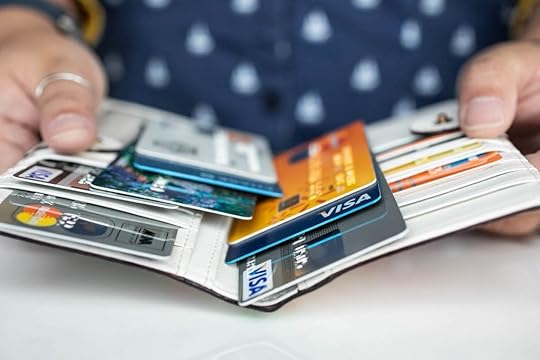 Aileen Perilla/The Penny Hoarder
Aileen Perilla/The Penny HoarderHave you ever considered consolidating your debt? It could substantially lower payments you’re already making and help you save more money each month.
A lot of us are being crushed by credit card interest rates north of 20%. If you’re in that boat, consolidation and refinancing might be worth a look.
A good resource is online lending platform Upstart , which can help you find a loan without relying on only your conventional credit score.
Unlike traditional underwriting models that use only the common FICO scoring model, Upstart’s technology looks at factors like your education and employment history to determine your creditworthiness (though it does require a 620 credit score).
It can help you borrow up to $50,000, potentially with better terms (e.g. lower interest or lower monthly payments) than traditional lenders. If managing many different bills and credit lines is a hassle, you can also use an Upstart loan to streamline all of your loans into one.
3. Find out Whether You’re Paying Too Much for Car Insurance
 monkeybusinessimages/Getty Images
monkeybusinessimages/Getty ImagesYou’re probably overpaying for car insurance. And how would you know, really?
Have you shopped around lately? Have you compared rates from the 20 largest auto insurers that do business in your area? That sounds kind of difficult and time-consuming, doesn’t it?
Fortunately, a service called Gabi will do it for you, and you don’t even have to fill out any forms. Simply link your insurance account and provide your driver’s license number, and Gabi will go to work.
Once you link your insurance account to Gabi, it will:
Scan your existing insurance plan.
Analyze what coverage you have.
Compare the major insurers’ rates for that same coverage.
Help you switch on the spot if it finds you a better rate.
It is a true apples-to-apples comparison at the same coverage levels and deductibles you currently have. Once you sign up, you never have to shop again. Gabi’s software has your policy on file and keeps on monitoring for savings as your life changes.
4. Take 10 Minutes to Protect Your Family’s Future
 Johnny Greig/Getty Images
Johnny Greig/Getty ImagesMany of us would rather not think about death — let alone life insurance.
However, securing life insurance is an important financial move, especially if you’re married, have kids or are in your prime earning years. It pays your dependents when you die, which can help pay for your funeral, mortgage or other debt.
So if “get life insurance” has lingered on your to-do list far too long, take the next 10 minutes to figure it out. Don’t worry — it’s way easier than you think.
A company like Policygenius offers you an easy way for anyone to compare and buy life insurance. The search engine allows you to compare policies and get instant quotes. Once you find the right fit, you can apply right online.
If you’re young and mostly healthy, consider purchasing term life insurance online from Ethos. It partners with a major A-rated life insurance carrier to provide policies for a low price. For example, $30 a month could get your family $1 million of coverage.
Anyone, including independent contractors, can secure term life insurance through Ethos without a medical exam or extensive paperwork; just fill out a digital application.
5. See How Your Finances Stack up to Your Peers’
 PeopleImages/Getty Images
PeopleImages/Getty ImagesPicture this: You’re sitting across from your longtime friend at the local diner. You catch up on life, then, because you’re curious, you ask your friend about her income, her student loan debt and her savings.
How many of you just cringed?
Most of us don’t have friends — or even family members — who are willing to talk explicitly about these numbers.
Status Money is an app that allows you to anonymously compare your financial situation with your peers without asking those awkward, prying questions. Link an account to tap into this database and you’ll be able to compare your income, debt, interest rates, credit score, spending… you name it.
By seeing how others are doing, you can see what you need to work on — or where you can sit back a little and just breathe easy.
6. Snag $10 — Plus Cash Back — for Shopping Online
 GaudiLab/Getty Images
GaudiLab/Getty ImagesOne of our favorite ways to save is with Ebates, a cash-back site that rewards you nearly every time you buy something. For example, Ebates gives you 10% cash-back on purchases at Walmart.
Plus you’ll get a free $10 gift card to Walmart for giving the site a try.
Sign up for Ebates with your email or Facebook account.
Use the Ebates portal the next time you need to buy something. It’s connected to thousands of stores, including Walmart, Amazon and Target. You’ll need to make your first purchase through the site within 90 days and spend at least $25.
Your account will be credited with rewards points you can cash in for your $10 Walmart gift card.
7. Invest in Real Estate (Even If You’re Not Wealthy)
 Heather Comparetto/The Penny Hoarder
Heather Comparetto/The Penny HoarderWant to try real-estate investing without playing landlord? We found a company that helps you do just that.
Oh, and you don’t have to have hundreds of thousands of dollars, either. You can get started with a minimum investment of just $500. A company called Fundrise does all the heavy lifting for you.
Through the Fundrise Starter Portfolio , your money will be split into two portfolios that support private real estate around the United States.
This isn’t an obscure investment, though. You can see exactly which properties are included in your portfolios — like a set of townhomes in Snoqualmie, Washington, or an apartment building in Charlotte, North Carolina.
You can earn money through quarterly dividend payments and potential appreciation in the value of your shares, just like a stock. Cash flow typically comes from interest payments and property income (e.g. rent).
(But remember: Investments come with risk. While Fundrise has paid distributions every quarter since at least Q2 2016, dividend and principal payments are never guaranteed.)
You’ll pay a 0.85% annual asset management fee and a 0.15% annual investment advisory fee.
8. Get Your Paycheck 2 Days Earlier
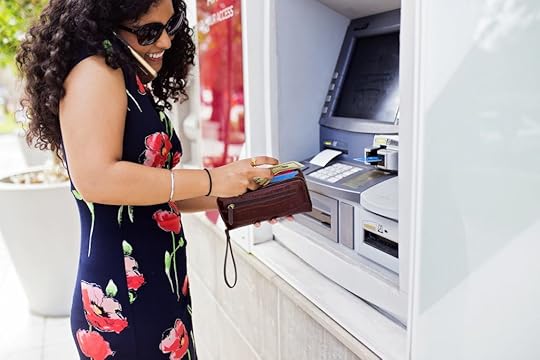 Carmen Mandato/ The Penny Hoarder
Carmen Mandato/ The Penny HoarderWant to get a jump on payday? Let Chime be your secret weapon.
Unlike most financial institutions, this online bank account doesn’t wait until your pay date to give you access to your money. As soon as it receives notification of a direct deposit from your employer, it immediately posts those funds to your account.
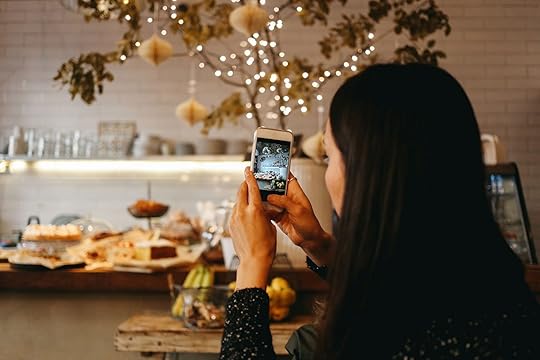 lechatnoir/Getty Images
lechatnoir/Getty ImagesSign up for these sites to start earning extra money every month — without any extra work!
Now you’re on the right track and saving money. Sweet! Keep it up by tracking your spending. Empower is an app that helps you organize and track your financial goals. Simply link your various accounts, and you can review your spending and make adjustments as needed to stay on the right track.
10. Invest Your Spare Change — and Get a $5 Bonus
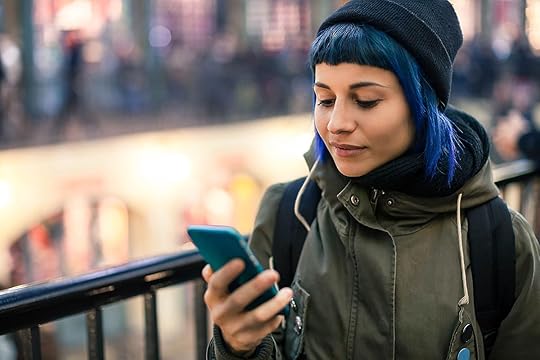 Marco_Piunti/Getty Images
Marco_Piunti/Getty ImagesIf you’re like most of us and wish your money would just take care of itself, consider starting an investment account through Acorns.
You can start small — with $5 — and stack up change over time with its “round-up” feature. That means if you spend $10.23 at the grocery store, 77 cents gets dropped into your Acorns account.
Then, the app does the whole investing thing for you.
The idea is you won’t miss the digital pocket change, and the automatic savings stack up faster than you’d think. And the sooner you start, the more you could potentially make. For example, Penny Hoarder Dana Sitar was able to save at a rate that would let her stash $420 away per year.
At that rate, you could set aside $1,000 in about two and a half years — without trying.
But the beauty is you can set your own pace with Acorns’ features, so if you want — and can afford — to invest $1,000 faster, go for it.
The app is $1 a month for balances under $5,000, and you’ll get a $5 bonus when you sign up.
11. Get Help Paying off Medical Debt
 Tina Russell / The Penny Hoarder
Tina Russell / The Penny HoarderGot a big tax bill? Medical expenses? Moving to a new state?
Wondering how to pay for it? Well, it’s probably way easier than you think to apply for a personal loan — just make sure you know you can repay it.
A good resource is consumer financial technology platform Even Financial , which can help match you with the right personal loan to meet your needs.
Even searches the top online lenders to match you with a personalized loan offer in less than 60 seconds. Its platform can help you borrow up to $100,000 (no collateral needed) with fixed rates starting at 4.99% and terms from 24 to 84 months.
12. Get a Free Assistant to Negotiate Your Bills
 mediaphotos/Getty Images
mediaphotos/Getty ImagesOn the phone with your cell phone or internet provider, trying to haggle a lower monthly bill?
Go ahead and hang up. (We know you’re probably listening to crappy music while sitting on hold, anyway.)
Download TrueBill , an app that’ll negotiate your bills, cancel unwanted subscriptions and refund your bank fees.
After downloading the app, create an account and link your bank account and/or credit cards. Turn on the bill negotiation and outage protection features. Boom. TrueBill is already searching for potential refunds — it might get you a refund even when you didn’t know an outage occurred.
On average, Truebill customers get $12 in credits off their cable bills each month.
The app will also remind you of all those sneaky subscriptions you’ve signed up for through the years, so you can cancel what you don’t use and reclaim your monthly budget.
Signing up and using the service is free, though there are some paid premium services that are totally optional — but could totally be worth it.
13. Build Your Savings Without Trying
 Georgijevic/Getty Images
Georgijevic/Getty ImagesSaving money is tough. So what if you could do it in a way where you wouldn’t even notice?
Digit makes that possible.
This innovative app automates saving for you. Simply link it to your checking account, and its algorithms will determine small (and safe!) amounts of money to withdraw into a separate, FDIC-insured savings account.
Additionally, savers will receive a 1% bonus every three months.
Using this set-it-and-forget-it strategy, one Penny Hoarder saved $4,300 without noticing — read his Digit review.
If you need that money sooner than expected, you’ll always have access to it within one business day.
Digit is free to use for the first 30 days, then it’s $2.99 per month afterward.
14. Get Paid When You Swipe Your Credit Card
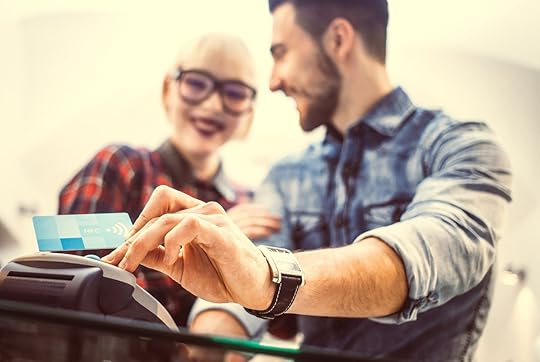 funstock/Getty Images
funstock/Getty ImagesIf you’re not using a rewards credit card for everyday purchases, you’re missing out on free money.
You just have to be sure you don’t get too carried away with those purchases — and that the card is paid off at the end of each billing period.
Here’s an option we like: It’s the Chase Freedom Unlimited card. Its claim to fame? You’ll earn an unlimited 1.5% cash back on all your purchases. Plus, if you spend $500 in your first three months of opening the card (hi, groceries), you’ll pocket a $150 bonus.
There’s no annual fee, and the cash-back rewards don’t expire. We checked Credible’s annual rewards calculator, and it estimates $417 in annual rewards based on our spending habits.* (You can enter your unique spending habits and see what you’d earn, too.)
Get signed up — and 0% intro APR for 15 months — here.
*Annual Rewards amounts will change based on the amounts you enter. The monthly spending category names and definitions may vary among issuers, and categories may not align one-to-one.
The information for the Chase Freedom Unlimited card has been collected independently by The Penny Hoarder. Opinions expressed here are the author’s alone, not those of the credit card issuer, and have not been reviewed, approved or otherwise endorsed by the credit card issuer. The Penny Hoarder is a partner of Credible.
15. Play the Slots — and Bank $5 for Your Savings Account
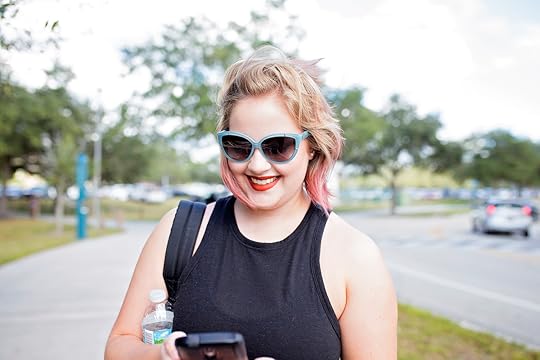 Carmen Mandato/The Penny Hoarder
Carmen Mandato/The Penny HoarderAre you more of the “sit at home and play video games” type of person but you’re making yourself read this because you’re determined to get this adulting thing down?
The folks who created Long Game have you covered with a game that’s fun and helps you achieve your financial goals.
As you save and accomplish missions you’ll earn coins to play mini games for cash prizes! We’re talking the classics, like slot machines, scratch-offs and spin-to-win wheels.
Penny Hoarder Carson Kohler uses Long Game to save money. Every two weeks, it sneaks $5 out of her bank account and rewards her with coins.
In two months, she’s saved $35.70, just by playing games on her phone. Plus, her winnings amount to a gain of about 2% — way higher than interest on any other savings account she has.
Once you link your bank account, you’ll earn 300 coins, so you can start playing while you wait for payday. If you sign up before November 30, 2018 and enter the code PENNY5, you’ll also get a bonus $5 in your account!
Bonus: Avoid Mayhem by Having Insurance
 gradyreese/Getty Images
gradyreese/Getty ImagesYour home is probably your largest, most valuable asset, so you’ll want to protect it with homeowners insurance.
Find an insurance agent near you with this handy online tool.
Read customer reviews if you’re not sure who you want to work with.
Snag a quote quickly.
Ready to stop worrying about money?
Get the Penny Hoarder Daily
This content was originally published here.
The post 15 Shrewd Money Management Tips appeared first on Reach Out Recovery.
August 10, 2019
Cheese triggers the same part of the brain as hard drugs, say scientists
If you regularly find yourself hovering around the cheese board at the Christmas dinner table, helping yourself to seconds or thirds, there may be a scientific explanation as to why you’re unable to tear yourself away.
Researchers from the University of Michigan have revealed that cheese contains a chemical found in addictive drugs.
Using the Yale Food Addiction Scale, designed to measure a person’s cravings, the study found that cheese is particularly moreish because it contains casein.
The chemical, which is found in all dairy products, can trigger the brain’s opioid receptors, producing a feeling of euphoria linked to those of hard drug addiction.
Read more
How to pair wine with cheese
500 students were asked to complete a questionnaire to identify food cravings, as part of the study, with pizza topping the list as the most addictive food of all.
In addition, they found that the top-ranking foods on the addiction scale were those containing cheese.
Scientists studying dairy products found that in milk, casein has a minuscule dosage. But producing a pound of cheese requires about 10 pounds of milk — with addictive casein coagulating the solid milk fats and separating them from the liquids.
As a result the super-strength chemical becomes concentrated when in solid dairy form, so you’ll get a higher hit of addictive casein by tucking into a cheese sandwich than you will in your morning bowl of cereal.
Cheese varieties you should know
Cheese varieties you should know
Parmesan
Panela
Emmental
Brie
Mozzarella
Cheddar
Feta
Study author Erica Schulte said: “If properties of some foods are associated with addictive eating for some people, this may impact nutrition guidelines, as well as public policy initiatives such as marketing these foods to children.”
Nicole Avena, a co-author on the study, said: “This is a first step towards identifying specific foods, and properties of foods, which can trigger this addictive response.
“This could help change the way we approach obesity treatment. It may not be a simple matter of ‘cutting back’ on certain foods, but rather, adopting methods used to curtail smoking, drinking and drug use.”
The news comes after it was revealed that the average person is estimated to eat around 35 pounds of cheese a year – suggesting that it really as addictive as research claims.
No wonder the smelliest of Stiltons can have us reaching for the crackers by the handful.
This content was originally published here.
The post Cheese triggers the same part of the brain as hard drugs, say scientists appeared first on Reach Out Recovery.
August 9, 2019
Never Forget That You Have The Power To Choose
From Tiny Buddha:
“If we are peaceful, if we are happy, we can smile, and everyone in our family, our entire society, will benefit from our peace.” ~Thich Nhat Hanh
Dedicate today to the power of choice. Your choice. You can’t choose everything that you experience in life, but what you can choose is mightier than any circumstance, outcome, or other person’s opinion.
Where you focus your mind, how you use your words, and how you treat yourself and others are all up to you. One chapter at a time, you write your own story.
We all have the power to choose what we absorb and what we release. We ultimately decide what we share, what we keep, and what we let go. How long we stay mad and how long we wait to reach for hope, when we say yes and when we say no, and how long we say only what others want to hear are all up to us. Whether we see the world with gratitude or resentment begins with a choice.
It’s not that anyone chooses pain, though. I can’t think of a single person who’d choose despair or insecurity. No one elects shame to be their shadow. Not even boredom is a choice. We just forget our power sometimes or maybe underestimate the power of our intentions.
For me, forgetting is a quick slide into control or fear. Every doubt, complaint, and fear leads me directly to more to doubt, complain about, and fear. The pressure builds. Tension rises. And even then, as much as I hate to admit it when I’m steeping in it, I have a choice.
I can choose how closely I pay attention to my thoughts and how I respond to what I feel. Even if hours go by, days, years, it’s never too late to make a different choice.
My husband will be the first to tell you that I can hold on to things. I spent months holding on to a comment a friend made about my writing. I mentioned to her that I felt stuck on a project, and she told me, “It’s not it’s like real work. You don’t actually have to do it.”
I was seething when she said this but didn’t say a word about it to her. I’d let the comment go for a few days, saying “it’s fine,” but as soon as her name came up? That was all I could think about.
I can go even further back than that. When I was about six, a little boy on the bus called me a hag. It may seem like a small thing for first graders to tease each other, but I cannot tell you how many ways that one comment has worked its way into my self-image since then. At times I thought it was hopelessly stuck in my psyche. And still, thirty years later, I somehow made the choice to process and resolve that memory.
It’s never too late to choose.
When I remember the power of my intention, no matter how long it takes me, I come back home to myself with deepened perspective and goodwill. My choices soften the anger, fear, and sorrow I once felt. Remembering my power to choose restores the gentleness in my step and words. I see a completely new world around me.
From that place of remembering, all the positive, empowering choices available to me emerge from the mental fog. I can choose to ask a question, solve a problem, or call for help. I can choose to take a walk, meditate, have a snack, water the flowers, or count my blessings.
Each positive step leads to more and more positive choices.
So many things are out of my control, and I’m learning to let go of wanting it to be otherwise. I understand now that this only happens through my choice.
I’ve historically wanted to follow a plan, not go with the flow. And I’ve depended on those plans going off without a hitch to feel safe.
Here’s an example: When my husband mentioned finding a new job a few years back, I wanted to know all the details. No, I wanted more than that. I wanted to be so involved in the process that I knew exactly what was going on. When he didn’t get a new job, I wanted to know why and what this meant.
Of course, life doesn’t work that way, and by hanging my security on details I couldn’t control, I gave away my own power.
When I could acknowledge that pattern, I opened myself up to choosing differently. If I want more certainty, I can choose to look for the things I trust like my values, strengths, and the learning process rather than the things that could go wrong. If I want to feel more at peace, I can choose to speak to myself with more kindness not more criticism. Above all else, I can choose to have my own back no matter what.
What I’m learning from this is there’s so much to be deliberate about and so many ways to choose.
You can choose to set a small boundary when you’re exhausted from keeping the peace.
I choose to be true to myself. May my honesty restore what’s been depleted.
You can choose to broadcast loving-kindness when you see the images of suffering in the news.
May all beings be safe from harm. May all beings return to peace. May all beings find freedom.
You can choose to acknowledge our shared human experience when you feel most alone.
In this moment, I remember that in my joy and suffering, I am connected to all of humankind.
And when you’re on top of the world, you can choose to bask in it.
I dedicate this moment to the deep gratitude I feel. I choose to delight in this joy today.
There’s always something you can choose. So, choose soothing, however you’re able. Choose to look for things to feel good about. And if nothing else, choose to be as intentional as you can. Always with acceptance for the part of you that forgets.
Starting now, starting small, remind yourself of your power to choose. Here’s how:
Begin with yourself.
Offer whatever you have on you right now—your beating heart, your breath, your hands, your eyes reading these words—to your power to choose. With that power, dedicate this moment in time to your health or happiness, to a new story, or anything that resonates with you.
I dedicate this breath to my happiness.
I dedicate this day to my health.
With every word I read, may I remember my power to choose.
From there, if you feel inspired, add on to it with another choice: Take a positive step that supports your health and happiness. Make plans to do the same tomorrow.
If no step calls out to you, that’s okay. Smile and thank yourself for this choice all the same.
Next, focus your power to choose on someone you love.
For just a moment, offer whatever is within reach to them.
I dedicate this hour to the people I love the most. May the beating of my heart bestow health, happiness, and security upon them.
Again, build on this intention with a choice if it feels right. Pick up the phone, lend a helping hand, or send a quick text.
If no action is needed or accessible now, that’s okay. Smile and imagine them receiving your dedication all the same.
You can extend your power to choose as far out as you like.
Dedicate every step you take crossing the street to the well-being of all passersby. Then, add on as appropriate with another choice. Smile at them. Make eye contact. Mentally send them positive wishes for their day.
Devote your commute today to bringing harmony to a challenging relationship. If it feels accessible, make another choice. List their positive traits. Name one way you could respond differently. Forgive if you’re able and willing. If nothing else, choose to be alert to how your attention feeds your internal experience of conflict and choose to nurture something new.
With your power to choose, give a voice to your deepest wishes for the planet and all who inhabit it. Go as big as you like.
I dedicate my words today to the message of love. May all who I encounter receive this message and help me spread it through their words. May this message proliferate and reach all beings.
I send my love to the planet. May I aid in the purification of the air, the restoration of our oceans, and the health of all creatures in whatever way is available to me today.
And then, take whatever action presents itself to you. If no action is available, that’s okay. Smile and know that you’ve strengthened your power to choose all the same.
If a choice resonates with you, stay with it. Work with it for as long as it feels right. It could be a day, a week, a month, or more. Expand on it with more choices as is appropriate for you in your current situation.
Pay attention to what happens as you practice this. Perhaps you’ll notice new ideas flowing more easily. Maybe you’ll feel motivated to take a positive step you’ve put off for a while. If all that happens is feeling more awake and empowered, then it’s well worth the effort!
No matter what arises in your day or in your heart, remember there’s always something you can choose. May we all remember the power we have.
The post Never Forget That You Have The Power To Choose appeared first on Reach Out Recovery.




